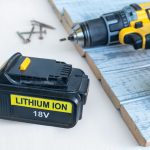40 Years of news, information, inspiration and leadership

In the forty years of Metal Construction News a lot about the industry has changed, even the name of the magazine. Founded as Metal Building News, the magazine was devoted to covering the pre-engineered metal building industry, and found two great partners in the Metal Building Manufacturers Association (MBMA) and the Metal Building Dealers Association (MBDA). The MBDA later changes its name to the System Builders Association but is know today as the Metal Building Contractors and Erectors Association (MBCEA).
Within a couple of years, though, magazine changed its name to Metal Construction News and began including more coverage of the metal component market. Eventually, founders Sam Milnark and John Lawrence, helped found the Metal Construction Association and from that was born METALCON International.
Today, the industry those two men foresaw and helped build along with association partners, manufacturers, friends of the industry and contractors is now a vibrant market where metal buildings and metal building components are in the vanguard of building performance and exquisite design.
Stories from the Timeline
First Contractor Profile
In the October 1980 issue, MCN ran its first feature-length profile of a metal building contractor. Founder and editor Sam Milnark interviewed Harry Williams of H.S. Williams Co., a metal building dealer and erector in Marion, Va. The company was established in 1962 and is still going strong today. It was an early leader in the metal building industry, and MCN named it the “Top Metal Contractor” of the decade for 1980-89.
Today, H.S. Williams operates as a design-build general contractor, and over the life of the company, it has built more than 150 million square feet of buildings, with approximately 95% of that as metal buildings. In 2019, it erected 970-tons of steel and built over 425,000 square feet.
Harry Williams passed away in 1998, followed a few weeks later by his wife, Patsy. Four vice presidents purchased the company, and as the last of them neared retirement in 2019, it was sold to Christian Alexander, who started as an estimator in 2007. Today, H.S. Williams is affiliated with Cornerstone Building Brands, Cary, N.C., and Nucor Building Systems, Waterloo, Ind. – Brinckerhoff

Serving the Industry with Market Research
Beginning in December 1981, MCN has regularly surveyed the metal construction industry to provide analytics that its readers can use to make business decisions, identify opportunities and develop strategic plans. Every year, the magazine has conducted a survey of contractors that shows market growth and market share for metal building systems, metal wall panels and metal roofing.
In the early 2000s, we asked our audience about its internet usage in two separate surveys, and every year, we survey contractors about the metal products they use, which helps our advertisers understand trends in the marketplace.
Recently, we took on two special research projects. In 2018 and 2019, we researched the metal roofing market by looking at how roofing contractors manage their businesses. The Metal Roofing Cost of Doing Business Surveys showed the breadth of the metal roofing industry and the business opportunities for contractors to offer installation services.
And just this year, as the COVID-19 pandemic struck, we did three surveys over a six-week period that reported real-time information on how the pandemic was impacting the metal construction industry. – Deffenbaugh
Hurricanes and Metal Construction
In August 1992, Hurricane Andrew struck South Florida, doing unprecedented property damage. The effect of that hurricane has driven changes to the building code ever since. But Andrew wasn’t the only storm MCN has reported on for the industry over the last 40 years.
Hurricane Ivan reached landfall in 2004, and our report identified how metal roofing panels withstood the winds. Two years late, Katrina blasted into New Orleans and MCN did a special feature on how metal buildings and metal components withstood the forces.
Not only hurricanes have drawn special attention for how the products we cover performed. The Loma Prieta earthquake in 1989 drew increased attention to the performance of metal building systems during seismic events. – Deffenbaugh

Tariffs and Steel Prices
The issue of dumping low-priced steel on the U.S. market by foreign producers has arisen a few times in the last 40 years. In particular, we addressed the issue in 2002 when President George W. Bush placed tariffs on steel imported into the U.S. In January 2004, MCN reported how the Bush Administration prematurely dropped tariffs on imported steel amid ongoing threats of retaliatory trade sanctions. Later in the year, MCN reported how and why the U.S. government was being asked to impose export tariffs in an attempt to keep steel and scrap from leaving the country.
Jump to the April 2018 when MCN reported on the issue again. President Donald J. Trump placed a 25% tariff on imported steel and 10% on imported aluminum, and prices of those commodities had increased. Later in the year in another feature analysis, MCN reported that in spite of Trump’s tariffs and pundit predictions, construction continued to grow because expansion overpowered the higher material costs and long lead times. – Robins

The Skilled Labor Shortage
In April 2018, the industry came to Chicago for the Metal Construction Industry Summit, hosted by MCN. The topic was “Attract and Retain: Developing a Workforce for the New Metal Construction Industry,” and contractors, manufacturers and suppliers shared information about the skilled labor shortage and discussed strategies for meeting the needs of the industry.
Industry experts offered their ideas in seminars and panels during the morning, and in the afternoon, attendees broke out into small groups for in-depth discussions on specific issues, such as better coordination with high schools on the opportunities in the trades, improved communication and mentoring, and better understanding of the new workforce. Beyond attracting new workers to the industry, contractors shared training ideas and skill development techniques.
In the July 2018 issue of MCN, we reported on the proceedings in a special issue devoted solely to the skilled labor shortage. This included the need to attract new workers, to retaining them and training them. – Robins
40 Years of Technological Advances
Most of the technological tools used today in metal construction were not around in 1980, and some weren’t even around in 2000. From the introduction of estimating and engineering software for metal building manufacturers in the mid- to late-90s to the mobile applications used on-site, technology has seeped into every element of the construction supply chain. It has become indispensable. Throughout our 40-year history, we have written multiple technology articles and featured numerous guest columns from industry experts.
A profitable construction job or project often hinges on the accuracy and timeliness of tracking job-related costs: labor, equipment and units of production/ percent complete. In October 2017, MCN covered this in a feature article on how operation bottlenecks, cost tracking and other areas can be improved by choosing the correct construction management software.

Photo courtesy of Gilbane Building Co.
Mobile solutions can eliminate the typical paper processes associated with timesheets, equipment usage or units of production. Providing the ability to capture these changes on a device and incorporating the approval process in the same system saves hours of time that was previously used to track down and confirm information. Also, online ordering tools developed with a focus on mobile-first design, let customers order products online 24 hours a day, seven days a week.
Mobile devices provide immediate information. Apps make it more convenient and practical for contractors, architects and building owners to work with companies. For instance, apps can simulate how different metal roofing profiles are installed with animation and contain PDFs of company brochures. Users can tap a color selector for roofing and gutter colors and see a larger version of the color swatch and an explanation of which materials it is available in. Social media apps such as Facebook, Twitter and LinkedIn help contractors with their marketing strategies. Used correctly, these tools generate leads and increase sales. In September 2013, an MCN feature addressed how mobile apps make your job-site experience better and more efficient.
Building Information Modeling (BIM) have delivered the tools to more efficiently plan, design, construct, and manage buildings and infrastructure. With BIM, projects can be built virtually before they are constructed physically, eliminating many of the inefficiencies and problems that arise during the construction process. In a July 2012 case study, MCN looked how BIM aided the collaboration of a California truck facility fabrication.
Technology has not only worked in the office and on the job site, it has also moved to the sky. Measuring a roof used to involve surveyors climbing on the roof with a tape measure and pad and pencil, taking three to four hours to make sure they were accurate in their measurements. Today, drones capture measurements from the air. Capable of flying extremely close to any site, they deliver precise measurements consistently and allow surveyors to generate accurate aerial photos, maps and 3-D models of job sites for further inspection. – Robins
Sustainability and Energy Conservation
Little has had more impact on the buildings our readers construct over the last 40 years than the sustainability and energy conservation movement. New regulations such as the Model Energy Code and market-driven changes such as LEED have made all of us approach construction in new ways. Beginning in the October 1981 issue, MCN has covered the sustainability topic when we wrote about a metal building using solar panels to heat it.
In the United States, residential and commercial buildings account for 40 percent of energy consumption, according to the U.S. Energy Information Administration. As the environmental impact of buildings has become more apparent over the past 40 years, green building design, construction and operational techniques have become increasingly widespread.
In the United States, residential and commercial buildings account for 40 percent of energy consumption.
U.S. Energy Information Administration
Sustainable buildings require healthier and more resource-efficient methods for construction, renovation, operation, maintenance and demolition. The elements of the green building program address energy use, water use, construction materials, waste reduction and the indoor environment. In January 2010, MCN reported that green building would support nearly 8 million U.S. jobs over the next four years and that there had been a 50% increase in green building programs since 2007.
Since 1993, the U.S. Green Building Council (USGBC) has defined global best practices for designing, constructing and operating sustainable buildings and spaces through LEED. Created in 1998, LEED, or Leadership in Energy and Environmental Design, is the world’s most widely used green building rating system and promotes the use of strategies that reduce environmental impact, enhance human health and support economic development. It measures and defines what green building means and provides a roadmap for developing sustainable buildings. Currently, there are over 102,000 projects across nearly 180 countries and territories participating.
A new unified green building code came into effect in September 2018. The International Code Council (ICC) and American Society of Heating, Refrigerating and Air-Conditioning Engineers (ASHRAE) aligned the technical requirements of ASHRAE’s Standard 189.1 for High Performance Green Buildings (189.1) with ICC’s International Green Construction Code (IgCC) into one, single model code. The IgCC powered by 189.1 provides minimum requirements for high-performance, green buildings. In September 2018, MCN ran a feature article on how this collaborative effort will deliver a more cohesive building code to help deliver sustainable, resilient, high-performance buildings. The next step in sustainability is resilience—the need to build to withstand hazards such as fires, hurricanes, floods, sub-zero cold snaps, earthquakes and even terrorist attacks. Because of this resiliency push, MCN is continuing to report how legislation is prompting the adoption of better construction codes to protect buildings and people. – Robins





